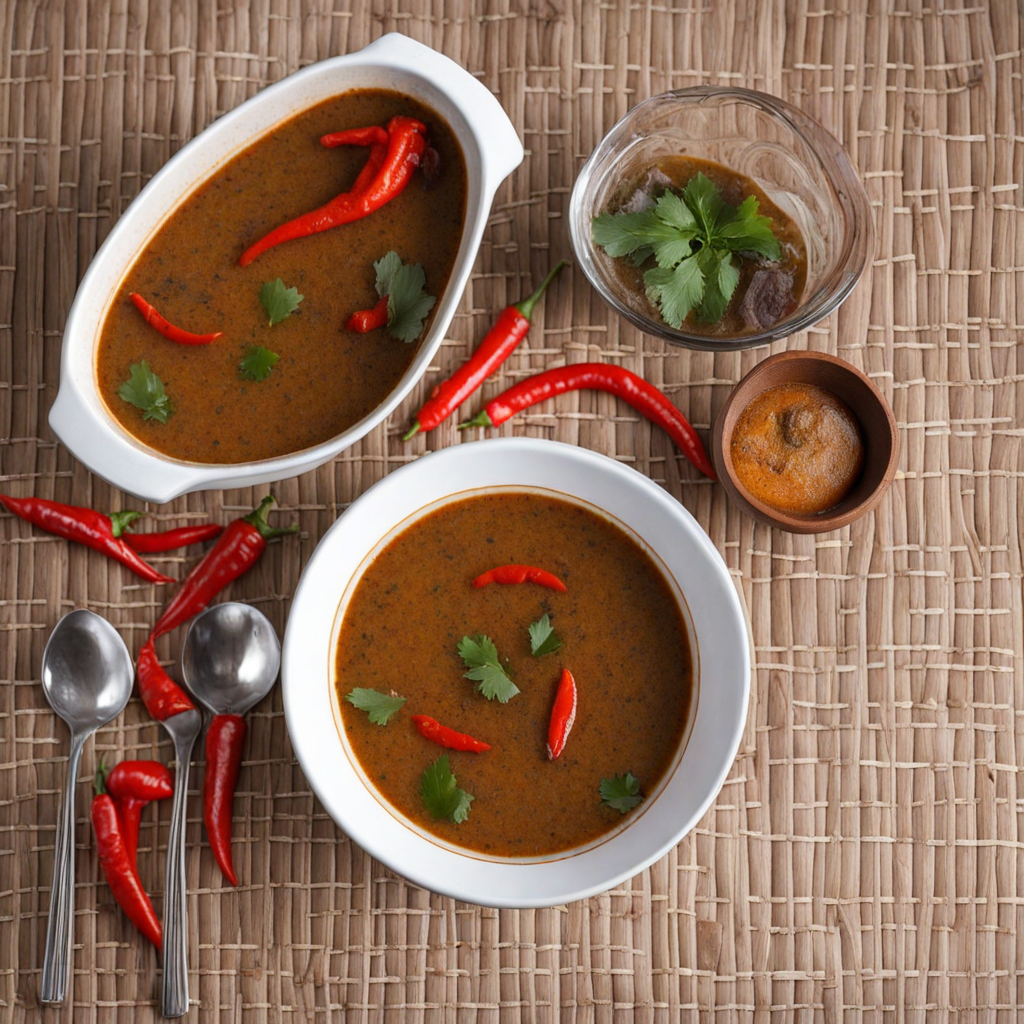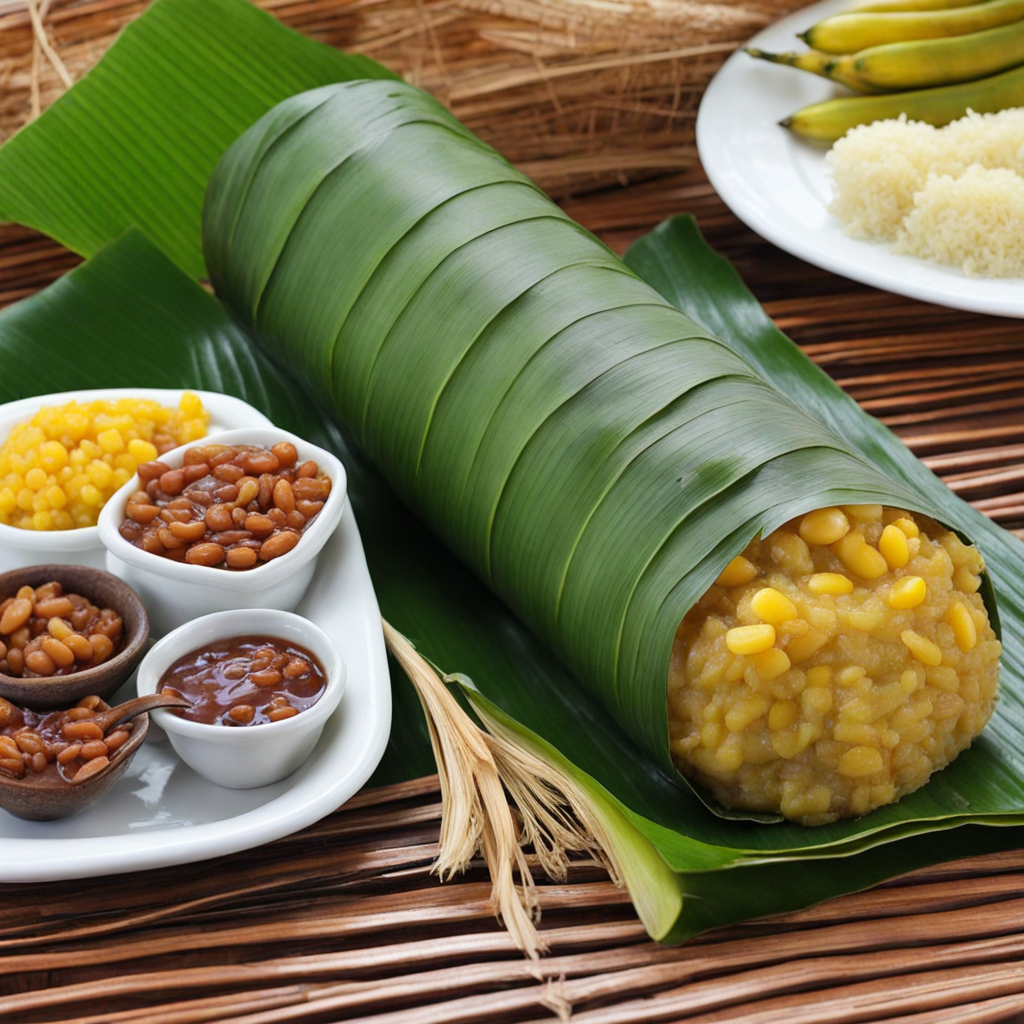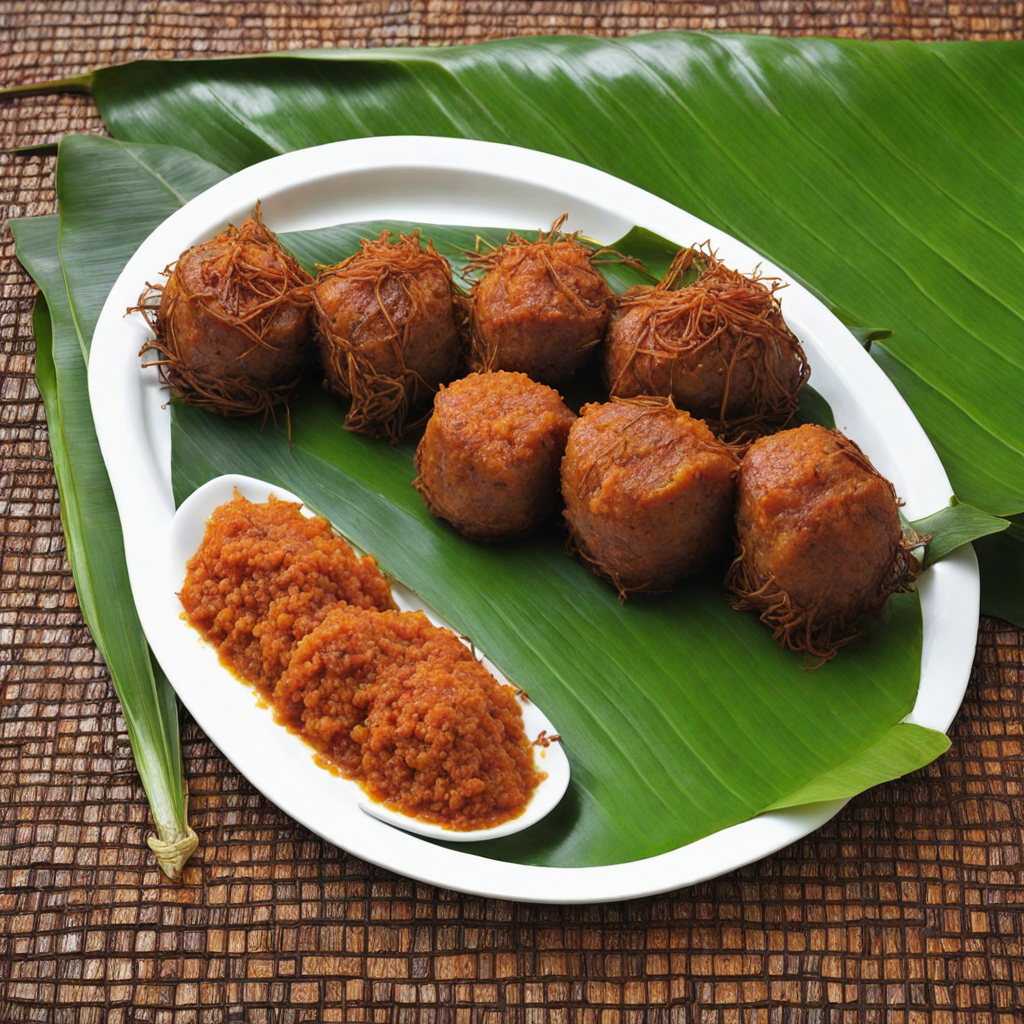Pepper Soup
Pepper Soup is a fragrant and spicy broth that originates from Cameroon, renowned for its bold flavors and invigorating heat. This dish is typically made with a variety of meats, such as chicken, goat, or fish, which are simmered in a broth infused with a blend of aromatic spices. The key ingredient is the unique "pepper soup spice mix," which often includes ingredients like calabash nutmeg, alligator pepper, and various local peppers, giving it an unmistakable kick that tantalizes the palate. The broth is usually light and clear, offering a soothing yet invigorating experience with every sip. Accompanying the rich flavors of the meat, the soup is often enhanced with fresh herbs like scent leaf or basil, which add a vibrant green note and a hint of earthiness. Vegetables such as onions, garlic, and ginger are also commonly included, each contributing to the layered complexity of the dish. The heat level can vary depending on personal preference, but the balance of spices is what truly sets Pepper Soup apart, making it a beloved comfort food across the region. Often enjoyed as a starter or a main dish, Pepper Soup is typically served hot and can be paired with starchy side dishes such as rice, plantains, or yam, which help to absorb the rich flavors of the broth. This dish not only warms the body but also serves as a social food, often shared among family and friends during gatherings or celebrations. With its fiery spirit and aromatic profile, Pepper Soup is a culinary adventure that encapsulates the essence of Cameroonian cuisine, making it an exciting discovery for any food lover.
How It Became This Dish
Pepper Soup: A Culinary Journey Through Cameroon Pepper soup, a beloved dish in Cameroon, is more than just a spicy broth; it’s a vibrant representation of the country’s rich cultural tapestry and culinary heritage. With its roots deeply embedded in the traditions of various ethnic groups, pepper soup has evolved into a staple dish that transcends social classes and occasions. This exploration of pepper soup will delve into its origins, cultural significance, and development over time. Origins The origins of pepper soup can be traced back to the diverse ethnic communities of Cameroon, where cooking traditions vary significantly across regions. Among the most notable are the Bantu-speaking peoples, including the Beti, Bamiléké, and the Fulani, each contributing unique ingredients and styles to the dish. Historically, local communities relied on the natural resources available to them, utilizing indigenous spices, herbs, and proteins sourced from their surroundings. The core of pepper soup is a spicy broth, typically made with a variety of meats such as goat, chicken, fish, or even snails, depending on the region and seasonal availability. The defining feature of the dish, however, is its heat, primarily derived from a blend of local peppers. The use of spices such as ginger, garlic, and the all-important "pepper soup spice mix"—a blend of ingredients like calabash nutmeg, alligator pepper, and various chili peppers—provides a distinctive flavor profile that sets it apart from soups in other cultures. Cultural Significance Pepper soup is more than just a culinary delight; it holds significant cultural importance in Cameroonian society. Traditionally, it is served during communal gatherings, celebrations, and ceremonies, symbolizing hospitality and warmth. The dish is often featured at weddings, funerals, and other important life events, where it serves to bring people together in a shared experience. In many cultures within Cameroon, pepper soup is believed to possess medicinal properties. Its spicy nature is thought to aid digestion and provide relief from common ailments, which further enhances its status as a comfort food. In fact, it is often recommended for nursing mothers and those recovering from illness, reinforcing the dish’s role as a source of nourishment and care. Moreover, pepper soup has also found its place in the diaspora, where Cameroonian communities abroad have embraced it as a way to maintain cultural connections and pass down culinary traditions to younger generations. In this context, pepper soup becomes a bridge between home and the new world, offering a taste of nostalgia and identity. Development Over Time As Cameroon has evolved, so too has pepper soup. The dish has adapted to the influences of globalization, migration, and changing culinary trends while retaining its essence. In urban centers, for instance, variations of pepper soup have emerged, reflecting the integration of diverse culinary practices. Chefs and home cooks alike experiment with fusion styles, incorporating non-traditional ingredients or modern cooking techniques, while still honoring the foundational elements of the dish. One notable development is the rise of pepper soup as a popular menu item in restaurants and eateries, both in Cameroon and abroad. Many establishments now specialize in pepper soup, offering a range of options from the traditional meat-based versions to vegetarian adaptations. This commercialization has helped elevate the dish’s profile and make it accessible to a broader audience, introducing new palates to its bold flavors. Social media and food blogging have also played a significant role in the dish's evolution. With the rise of food influencers and chefs sharing their takes on pepper soup, the dish has gained recognition beyond its local roots. Recipes are shared, modified, and celebrated, leading to an ongoing dialogue about its preparation and presentation. This digital age has not only popularized pepper soup but has also created a platform for cultural exchange and culinary innovation. Regional Variations Cameroon’s geographical diversity has given rise to several regional variations of pepper soup, each with its unique twist. In the coastal regions, seafood pepper soup is particularly popular, featuring fish and shellfish seasoned with local herbs and spices. This variant showcases the abundance of marine life and the influence of coastal culinary traditions. In the northern regions, where the Fulani people reside, the dish often incorporates milk and beef, reflecting the pastoral lifestyle and the use of available ingredients. The pepper soup here is richer and creamier, providing a unique contrast to the spiciness that characterizes most traditional recipes. The Bamiléké people, known for their vibrant culinary practices, have their distinctive version, often enriched with local tubers and vegetables. This variation highlights the interplay between agriculture and gastronomy, showcasing the importance of local produce in traditional cooking. Conclusion Pepper soup is more than just a dish; it is a celebration of Cameroonian culture, history, and community. Its evolution over time mirrors the dynamic nature of the country itself, adapting to changing tastes while remaining rooted in tradition. Whether enjoyed at a festive gathering, a family meal, or as a remedy for ailments, pepper soup continues to occupy a cherished place in the hearts and kitchens of many. As Cameroon moves forward, pepper soup will undoubtedly remain a symbol of its rich culinary heritage, a dish that tells the story of its people and their enduring connection to the land. Through every steaming bowl, one can taste the history, struggle, and resilience of a nation that embraces its past while looking toward the future. In this way, pepper soup is not just food; it is a narrative of identity, culture, and community—a timeless tribute to the flavors of Cameroon.
You may like
Discover local flavors from Cameroon







